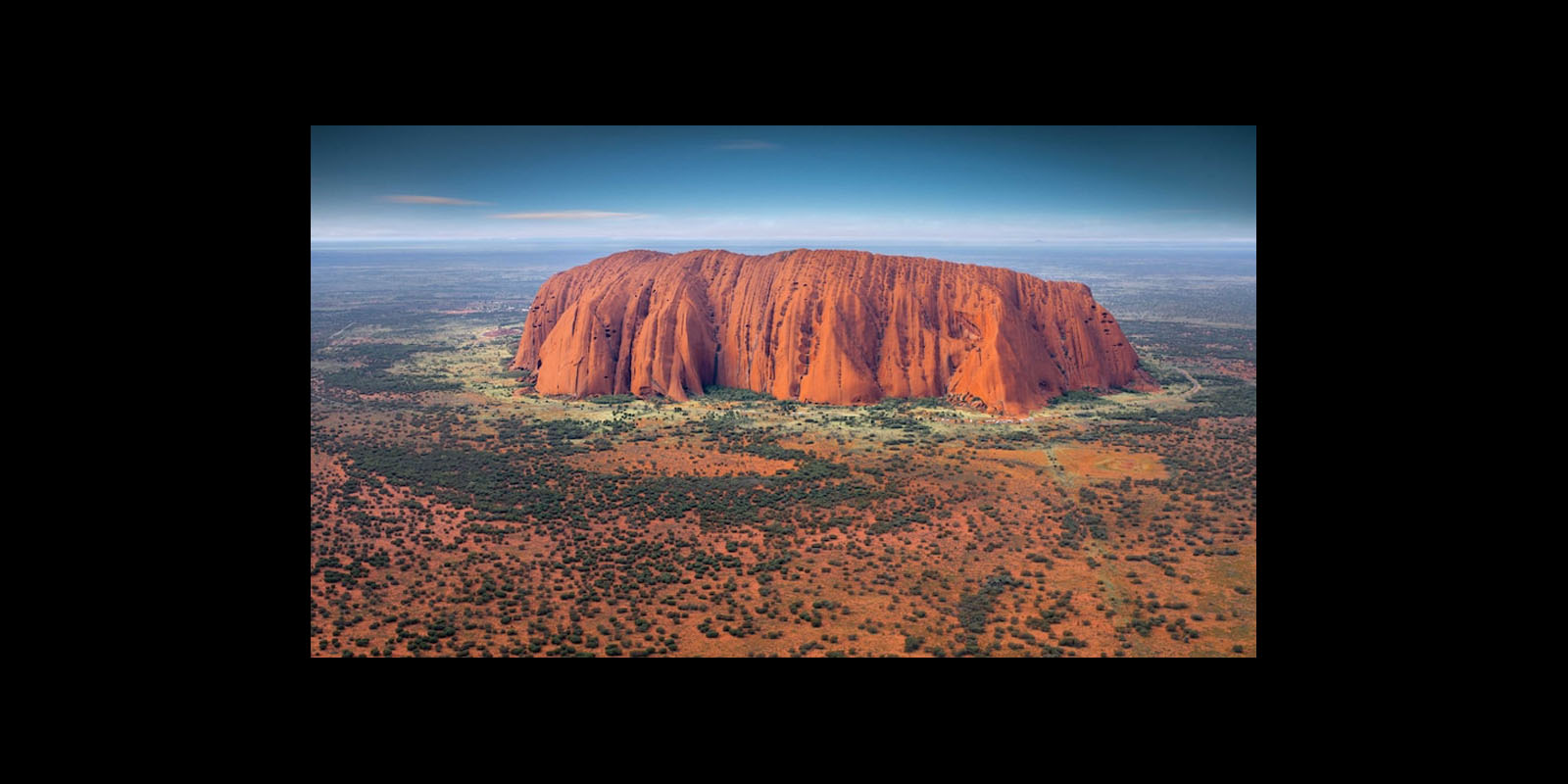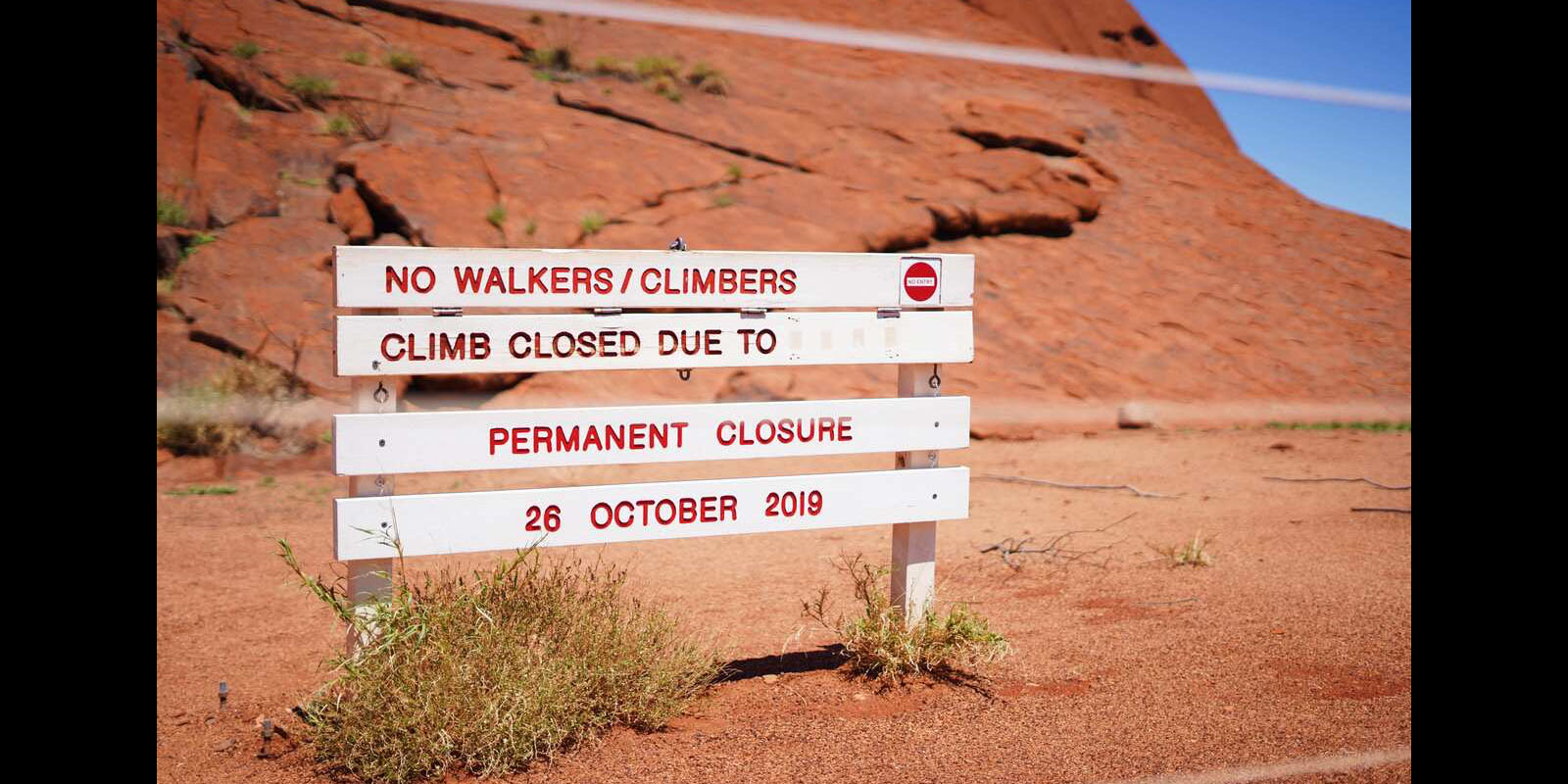The Anangu (pronounced arn-ung-oo) people are the traditional landowners of Uluru-Kata Tjuta National Park.
Uluru is an important and sacred site for them and has existed since the beginning of time – western science has dated it back around 300 million years.
Uluru, reaches heights of 348 metres above the ground and drops an additional 5-6 kilometres underground. The Anangu people have passed down the knowledge of how to care for Uluru and the surrounding lands over generations.
The first Europeans to explore this area were William Giles and William Gosse, during the 1870s. Gosse was the first to reach Uluru and named it after Sir Henry Ayers, the Chief Secretary of South Australia, from this point on Uluru was widely recognised as ‘Ayers Rock’. In the early 1900’s it was declared that land belonged to the government which allowed for many tourism and mining opportunities.
In 1950 ‘Ayes Rock National Park’ was declared and the Anangu people were encouraged to avoid the area and stop visiting however in 1964, the leases the government had issued were revoked many mob returned to the area and the government established a settlement at Kaltukatjara (Docker River).


Image: Uluru. Source ABC News (Getty Images/Ignacio Palacio).
Traditional Custodians fight for Uluru
After the 1966 Gurindji strike many Anangu were inspired to also take action. Over the next decade mob fought for their rights to their Country. They brought attention to issues such as mining taking place on their lands, pastoralism, the effects of tourism and the lack of recognition for the traditional custodians and the destruction of their sacred sites.
Following the historic Aboriginal Land Rights (Northern Territory) Act which came into force in 1976 the Central Land Council lodged a land rights claim on behalf of traditional owners. The claim was successful however the national park was not included as it was no longer crown land.
It took a further 6 years of lobbying before the national park was handed back to the Anangu people on the 26 October 1985. The title deeds to the park were handed back to the Anangu people by the Governor-General of Australia – Sir Ninian Stephen – in a ceremony on under the shadow of Uluru itself. This was a historical moment in and was an important part of the land-rights movement.
“Today we stand not merely in the centre of our continent but at its very heart. We stand beside what has become one of our national symbols, what original Australians know as Uluru, and what the rest of it think of as Ayers Rock,” – Sir Ninian Stephen, Governor- General of Australia


Image: Aboriginal people and Torres Strait Islander peoples - Handover of Uluru to traditional owners. Source: National Archives of Australia (Item ID 11688168).
The climb is shut down
As part of the handover, the Anangu people leased the land for 99 years to the Australian National Parks and Wildlife Service (now Parks Australia). A board of management was set up in December 1985 and a majority of members were Anangu.
The first recorded climb of Uluru took place in 1936. That number continued to grow however so did the number of fatalities which resulted in a chain being installed part of the way in 1966. The chain was extended in 1976 among other changes, none of which were done in consultation with the Anangu mob. The climb was heavily marketed and many people would attempt the climb when visiting the site.
The Anangu people asked tourists to not climb Uluru when they visited as it was a sacred site and only initiated men were supposed to have that kind of access however most tourists and visitors ignored this and continued to climb on their visits. Not only was this disrespectful it was also dangerous as the climb is quite difficult, due to the high temperatures and steep and slippery pathway. People have fallen, gotten stuck and even died on this climb.
In 2010 it was confirmed that the board would look at closing the climb permanently however certain criteria had to be met for that to happen.
In 2015 the number of visitors attempting the climb fell below 20% and in November of 2017 the board agreed to permanently ban the climb as of October 2019.
On the 26th of October 2019, exactly 34 years after the government officially returned the lands to the Anangu the climb on Uluru was officially closed. It is now illegal to attempt the climb and if caught doing so you can face expensive fines and possible prosecution.


Image: Climb Closure Sign. Source: SBS News (Aneeta Bhole).
Sources
- Our Story: Uluru and Yulara, Ayers Rock Resort
- Our History, Ayers Rock Resort
- History of Uluru-Kata Tjuta National Park
- Handback of Uluru to the Anangu people, National Museum Australia.
- On this day: Aboriginal Australians get Uluru back, Australian Geographic.
- Uluru climb closed permanently as hundreds scale sacred site on final day, ABC
- News
- Traditional owners mark one year since closure of Uluru climb, ABC News
